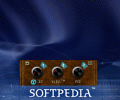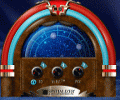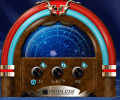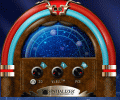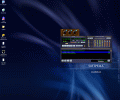What's going on?
Some people find it hard to settle for a certain sound as they are listening to music and they are constantly looking for new things to quench their thirst for the sound they desire. When it comes to digital music, the problem is even bigger since there are so many different formats, each with its specs, so much more playback softwares and even more plugins or additional little programs to complete the features of the first.
If one does not exactly know what he/she desires from a certain sound, then all of his efforts turn into a meaningless struggle which will never end. Even the professionals could get lost in the multitude of whether small or even larger programs which promise a whole new experience while listening to music.
Some may desire a more percussive or deep bass while others are looking for shimmering and glassy highs; another category of music listeners would like their tunes to sound warmer and others are delighted by open and wide-sounding melodies. Fortunately, by now, for almost every desire there is a piece of software which does exactly the requested thing whether for free or for serious money.
Since not everyone can install everywhere large speakers to hear their favorite songs in a musically-close-to-perfection environment, more and more people started asking for a software that would make the sound they perceive wider, brighter, closer to how it would be if coming from large HiFi loudspeakers ideally placed in a convenient room.
The Looks
The Spatializer VSP (Virtual Sound Processor) is a stand-alone program and thus, it has its own GUI. Not much to think or speak about, but nevertheless it is there. Overall, the Spatializer has the looks of an old jukebox, only smaller; the same neon-like rounded and arched top and the "wooden" front, all with small ornaments and three rotary dials with very vintage appearance. Besides each dial, there is a numeric indicator which goes from 0 to 11. In the middle, there is an aquarium-like screen with bubbles going up. Why? I really don't know.
Nice symbolism here: since usually these indicators/counters run usually up to 5, 10, 30, 100 and the likes...the Spatializer ends up at 11. The intricate ad-thought essence is that 11 is above 10 which is almost generally accepted as being the top value.
There isn't much more to write here about the way the Spatializer VSP looks; maybe I'll just have to say that it has two modes in which it appears. The first is the one I have just told you about, while the second one is some sort of minimized mode showing only the wooden panel with the 3 dials. Needless to say, you can move this application, whatever mode you're in, all over your desktop until finding the proper place. Unfortunately, it will occupy some space in the taskbar since it won't minimize to system tray.
Speaking of how it looks like, it is a very easy to use application and you can even tweak its settings without knowing too much about sound "spacing": just turn those buttons until you get a sound you like! Child or sound engineer alike will operate the Spatializer with the same good results.
The Works
The generic way the Spatializer works is very simple: it intercepts the sound running through WAVE and DirectSound routes and processes it prior to sending it to the sound card. Be it movies or simply an audio CD, the same results will occur, since the Spatializer isn't bound to any application.
The three dials on its front have 3 different functions as follows:
The 3D Pot affects the generic envelope filter of the media to be processed virtually, creating a morph-field of predefined structure (frequencies affected by processing and their boost/cut values), leaving the impression of sound coming from widely-apart speakers.
The Vi.B.E (Virtual Bass Enhancement) will amplify the bass perceived from small (and bass-incapable) speakers or even cheap headphones. Unfortunately, this filter adds a bit too more mod-low frequencies and these have a very pronounced tendency to create annoying rumble.
The third dial, the PCE (Phase Corrected Equalization), acts rather like a general phase gain, amplifying the ends of the audio spectrum but, at the same time, balancing the rest of the frequencies so the sound won't be misshaped.
There is one more button on the Spatializer's interface and this button lets you choose whether the program will work in the speaker or in the headphones mode. There is no real science need in operating the Spatializer: you just adjust the three knobs until you get the sound you were looking for.
As a personal impression, I'd say the Spatializer is needed in only 2 situations: when you play a badly-produced and lousy mastered music which has no dimension, thump and sparkle of itself, or when you the music is in a very good condition but the headphones or the speakers are really bad. Or you have both good conditions and desperately want more...
The Good
The best thing brought in by the Spatializer is that it offers a new dimension to common listening of audio media allowing one more piece of freedom to the whole process. This version works quite fine and it returned no errors during testing. I guess I should test this piece of software while playing some really lousy-produced music and not with close-to-perfection recordings.
The Bad
Personally, I didn't like the GUI almost at all. I have nothing against retro-looking graphics but the front of the Spatializer really looks untidy and even drawn in a hurry. Maybe a new design with more attention paid to the general appearance would suit better.
The Truth
A handy and useful tool for those permanently looking for new tonalities and, as well, for those who want music to sound better from their low-quality speakers and headphones.
Get a better idea on Spatializer VSP seeing the snapshots below:
 14 DAY TRIAL //
14 DAY TRIAL // 